On Reasoning and Touch
Ever go back and re-read something you wrote a year ago? It’s handy if you wish to trick yourself into setting fire to the calendar, your responsibilities, and lose a week to re-writing.
This article was originally written for Issue 5 of The Manual, but due to a publishing delay, it sat around for a while. I took a peek and my-several-months-wiser self was compelled to completely restructure the text. So: there are two versions. This one is more polished.
The previous version (on The Manual’s site, starting today!) was edited by the wonderful, patient Andy MacMillan and Lisa Sanchez. The draft you see here also benefitted significantly from their work. (Thank you both for challenging me and for ultimately allowing me to re-think…and double-post this!)
A Conversation with a Möbius Strip
In the 2013 film, Is the Man Who is Tall Happy?, Michel Gondry avails himself of Noam Chomsky’s open-door interview policy to see what he can discover about this tall man.1 Over the course of several visits, he greets the renowned linguist/political-theorist, gets comfortable, revs up his clickety Bolex camera, and reads a prepared question—smuggled in from another universe entirely.
Gondry would later draw each frame of the exchange in a vibrant and quivering, hand-scrawled style. Because of this, we can see neither man, but this only serves to amplify the tone. The variations in pacing, the backing up, the stopping short—all the audible artifacts of attentive accommodation convey the interviewer’s deep regard for his subject.
In general, the patience is reciprocal, in spite of the mis-match of this pair. Beloved for his oft-indescribable, you-just-have-to-see-it videos, Gondry initially seems an unlikely admirer of the man known as “the father of modern linguistics.” However, with Gondry’s novel exploitation of cinematic illusionism and with Chomsky’s pioneering discoveries on language acquisition, both have broken ground in their fields that no one else saw coming.
…Next question. After a deferential pause, Gondry poses a question from far afield. It’s about bees. But just as quickly as a buzzing motif can be scribbled-in, Chomsky shuts the whole thing down. The serene colors abruptly turn to confusion, capsizing the frame into waves of colored lines.
The inquiry prompting this oversized reaction relates to how bees build ambitious, complex worlds by crafting a single shape over and over again. In the absence of any discernible bee-zoning-committee, Gondry puzzles over the insect’s curious fixation on the hexagon.
In the context of an artist interviewing a linguist, the detour is not as random as it might appear. Gondry veers dangerously close to asking a question frequently explored in non-verbal artforms, but is rarely asked aloud. Is language our hexagon? Does language define the boundaries of everything we dream up—pulling human creativity back into the orbit of what can be understood with words?
“The limits of my language are the limits of my world.” —Ludwig Wittgenstein2
Gondry would have done better posing this question to cognitive scientist and linguist Lera Boroditsky. For the past ten years, she has doing empirical research on how language shapes perception—documenting the relationship between our word-reality and our sense-reality. Her experiments demonstrate that the brain’s sensory aptitudes actually do differ concurrent with how different languages frame the world.
For example, the language of the Kuuk Thaayorre, an Aboriginal Australian group, designates space in terms of the cardinal directions (your north leg, a south turn, etc.), rather than our relative left and right.3 When dumped in a maze-like building for a few hours, the Kuuk Thaayorre signaled their researchers back to the entrance much more effectively than their western counterparts. They are superior spatial thinkers and better navigators.
Boroditsky speculates why this is the case: “An obvious consequence of speaking such a language is that you must stay oriented at all times, or else you cannot speak properly.”
A similar observation led her to test whether differences in color words lead to differences in how we perceive color, by comparing English and Russian speakers. In Russian, there’s a specific word for light blue and one for dark blue, but not blue. They’re simply two different colors, like orange and yellow.
But do light blue and dark blue actually look more distinct to Russian speakers’ eyes? She decided to measure the amount of time required for members of each group to identify the colors. Consistent with her hypothesis, the Russian speakers distinguished between the two colors instantly and reflexively, whereas the English speakers lagged behind, sometimes by seconds, before blurting out the names of the two shades.
This—and much of—Boroditsky’s research suggests that language shapes our sensory experience of the world only because it directs us to pay attention differently. Language separates what we consider “signal” from the noise—focusing our gaze on concepts for which we have terms and away from concepts not formalized by language. Even in an age when we can collect and transmit deep, nuanced data on almost anything, it is still challenging to share even the most common sensory experiences. When we get sublimely dizzy staring up into a cathedral ceiling, shift to and fro to see the end of a long corridor wag, or feel the heaviness of the desert sky, we feel—through our senses—the profound weight of space and motion. These vivid events stick with us long after the recollections of proper names, nouns, and GPS data (all that would traditionally be considered information) has faded away. But try to share them with a friend and they evaporate like a dream.
In the final essay written before his death, sculptor/architect/designer Donald Judd noted that his life’s work with space yielded “particular and plentifully-diverse knowledge” to him, but that “to almost everyone else, it doesn’t exist.”4 Language covers its own minutia thoroughly, but simply isn’t set up to transmit the hunches, procedures, and discoveries of perceptual minutia. The loss of Judd’s knowledge is an inevitable demonstration that language only impartially covers human experience. Just like other interfaces, it feigns comprehensiveness: “This —and only this—is what you can do here.” But just try to describe how cilantro smells or how bleu cheese tastes and you’ll quickly find language’s edges.
“To see is to forget the name of the thing one sees.” —Paul Valery5
The artist Robert Irwin may be the unofficial mascot of instigating conversations with non-objects, empty spaces, and the other unnameables left behind by language. His work is an ongoing demonstration of how a back-and-forth can transpire using only the material world, stripped bare of all apparent signifiers. In 1977, and then again in 2013, he installed a piece so large that it consumed the Whitney’s entire fourth floor. However, when the show opened, people often walked right by it. Irwin recalls, “People would step out of the elevator, say, ‘Hmm, nothing here,’ and hop back in before the doors shut.” But the floor was not quite empty—and in Irwin’s work, “not quite” can mean “the entire world.”6
When I visited the second-coming of the installation, I spied nothing I could actually name—no sculptures, vitrines, frames, hardware. The space apparently only contained a single stretch of sheer cloth dividing the room into a grid of four chunks. Dramatically oriented to a single window:
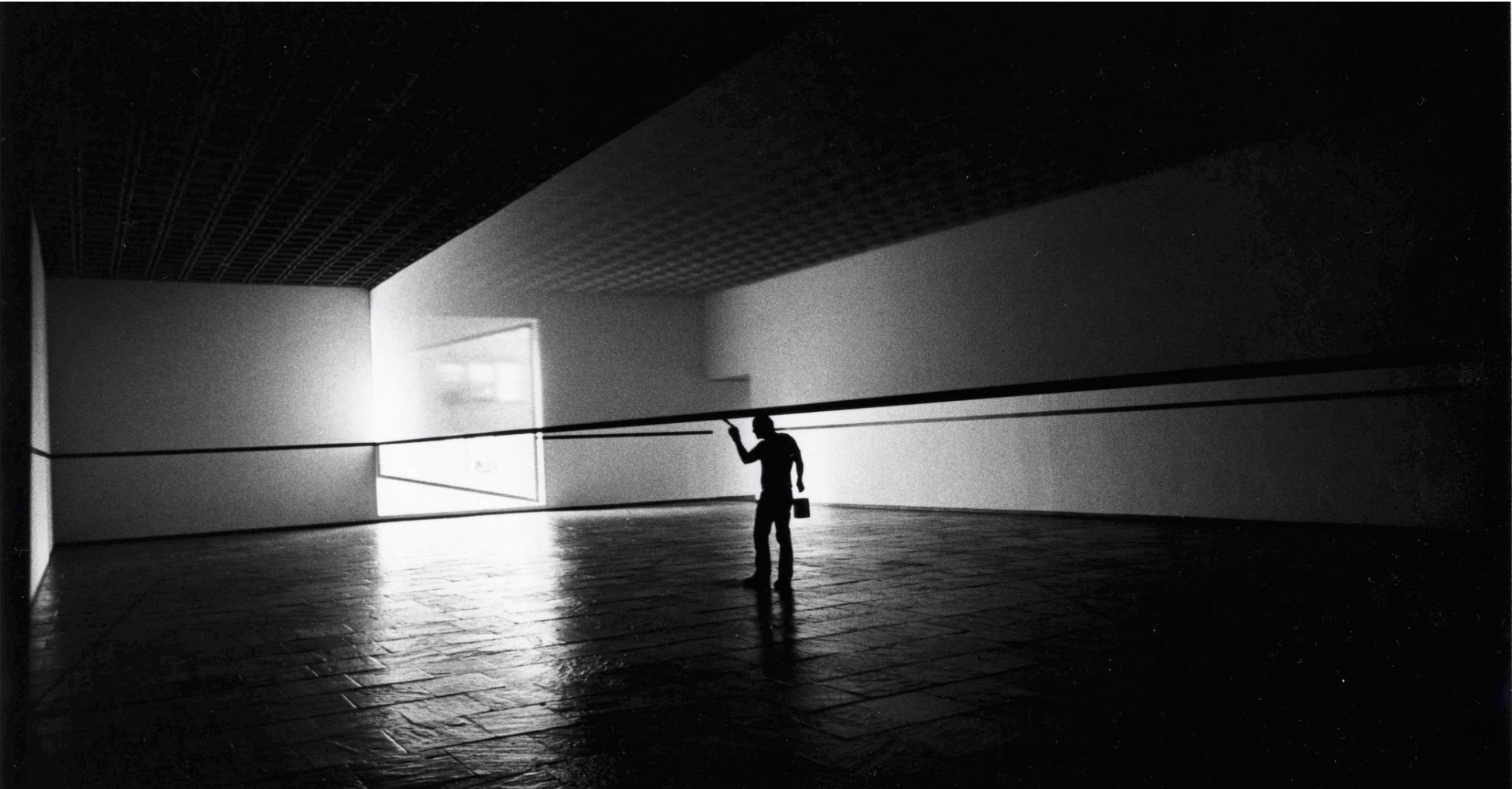 Nancy Crampton for the New York Times
Nancy Crampton for the New York Times
Traditionally, one would call this empty, but to the senses, it was full—loaded with shifting shapes, corners, shadows, surfaces, dramatic lines, textural changes, rays of light, blurriness, and sharp edges. Lines pivoted and cascaded around me in an orchestrated slow shift as I walked from corner to corner. This new sensitivity stuck with me as I walked away from the museum and noticed the skyscrapers turning their corners around my path. All of those instances of nothing had been filled with an exhilarating something—a different kind of sensory awareness about the choreography of space itself. Irwin just had to tip-me-off on how to look.
“The purpose of art has always been to wake people from such non-thinking,” Irwin writes.7 Much like adding a new word to your vocabulary, a demonstrative experience can readily become muscle-memory, changing how the beholder sees the world. Although positively ethereal in appearance, Irwin’s dispatches work on the most material, fleshy part of ourselves. A body is required to receive, decode, and carry such experiences.
“Everything is an event on the skin.” —Hermann von Helmholtz8
In the film, to initiate this chat with Chomsky, Gondry simply had to pick up the phone and make an appointment to visit. In our our lives, to begin a conversation with a material, we only have to pick it up and “play.” Prolific designers like Charles Eames have noted the accessibility of such exchanges—there’s no operator’s manual, you can learn by simply pushing things around.
Observing and interpreting a material’s reply, on the other hand, requires the cultivation of a particular type of sensitivity. Irwin emphasizes listening above-and-beyond action as the artist’s main professional duty. The passivity of this approach belies its radical implications. Allowing a thing begin the conversation threatens our structured assumptions about the role of human agency in the creative process:
“Curators would call and ask me, ‘If we invite you [to create an installation], what are you going to do?’ and I would have to say, ‘Well, I don’t know what I’m going to do; I’ll just spend some time there and then decide.’”
Rather than forcing a preconceived plot upon his subject, Irwin thinks we must keep our antennae up to take full advantage of our sophisticated human hardware. We can gradually attune our senses to material subtlety in much the same way that we’d slowly train our brains to speak French. In Designing Design, product designer, Kenya Hara, echoes this sentiment when he expresses that the joy of paper is not about what we do to it, but how it sharpens our faculties:
“It’s not the delicacy of the paper in and of itself … but the finely-tuned human senses paper can awaken … the distant universe and our immediate world can both be found here.”9
Hara notes that touch—as well as sight, smell, taste, and hearing—are all responses to pressure on the skin. Skin is our single natural interface on the friction of the world—whether that friction is a pin-prick or a photon of light bounced onto our retinas. It’s the turnstile through which all information from the outside must pass—our first front in understanding anything, not just the touchy-feely stuff. In this way, we navigate the friction of the universe intellectually, but through our skin.
Because of this, some logic concepts are best studied by simply placing them in your hand. Most third graders have taken a strip of paper, twisted it once, and taped the end together to make a one-sided object (how to). In spite of this basic recipe, the Möbius strip does not compute. Even with the unequivocal force of physical proof, there is a profound mismatch between what our senses claim is true and what our mind knows about flatness and dimension. It forces us to reconcile with our minds, by scrambling with our human hardware, something that subverts our understanding of reality. A Möbius strip is a physical logic concept that truly must be constructed to be believed (the Wikipedia article on this little curl of paper is incoherent at best.)
Because the hand navigates logic differently than the brain alone, this method of tactile reasoning is being used to approach some of engineering’s most intractable problems. The authors of Geometric Folding Algorithms explain why this strategy was adopted, “Because the topics are tangible, physical intuition makes them accessible via a wider variety of preparations.”10 The authors describe how origami is being used to design the most effective fold pattern for the unfurling an air bag in your car. And how twisted strips of knots help researchers model a way to untangle protein sequences. Other problems are being translated into more-analog formats to engage this uniquely-human method of reasoning.
However, while getting an answer from an interview subject is one thing, getting an answer from a material, object, or space requires a inventive and scrappy form of give-and-take. In the film, when Gondry awaits an answer, we hear a pause, and he can simply listen. (unless…you know: bees). The researchers designing your car’s airbag are pushing around paper folds to receive data back in return. This is “information” conveyed via resistance, friction, and spatial relationships—complex subtleties as-yet-impossible-or-impractical to measure…and therefore not formally regarded as “data.”
By simply feeling-it-out, a conversation can commence with whatever we choose: a line, a sound, a color combination, a taste, a chunk of code, or a material: “Does this work? … No … OK, well, what about this? Huh. Interesting … Oh! What about this?” The surprises and failures encountered along the way present themselves as nuisances—roadblocks to best-laid plans—but are actually exactly how answers are revealed in places we didn’t even think to question. A rare window out of our own heads is opened into the hitherto-unknown. The distinct intellectual pleasure offered by this friction-feedback is due to it being a check on assumptions, which would otherwise be incubated in our brains alone.
Much like dropping a pebble down a well to gauge its depth, we ask questions with actions and “listen” for a response back. We push to assess the stability of a chair, wait for an echo to locate distance, or walk across an empty room to assess its size. We may take these background exchanges for granted, but this is how humans are physically built to reason with the world. Though action and gauging-response, we are always carrying out conversations, big and small, with the material world.
“…His errors are volitional and are the portals of discovery.” —James Joyce (Stephen Daedalus)11
By the time the film starts winding down, Gondry has successfully navigated a conversation with a man who is notoriously difficult to know. He does this by listening and deftly recalibrating according to his subject’s signals. He has broken past Chomsky’s talking points and has revealed some underlying truths far too idiosyncratic to have been born from assumptions alone. It had to play out unscripted, with all of the glorious uncertainty, messiness, improvisation, and misunderstandings that true tinkering entails.
That we, in the so-called Information Age, assume data is the way to process the world’s stimuli makes us no different than every other period of human history. Our modern “informed” person would have been “sharp” in Middle Ages—a time so framed by the sense of touch that viewing a painting entailed rubbing your hand across it. It wasn’t until Gutenberg invented the printing press that sight overcame touch and the dominant modality. The Enlightenment then witnessed the explosive invention of the lens, optics, eyeglasses and our man was then considered “bright.”12 Medieval people may know a lot more than us about the topography of paint, but they certainly wouldn’t known what to do with an algorithm. We now approach wearable and haptic tech with less sensory-literacy than in previous ages (when the notion of information wasn’t so confined strictly to data.)
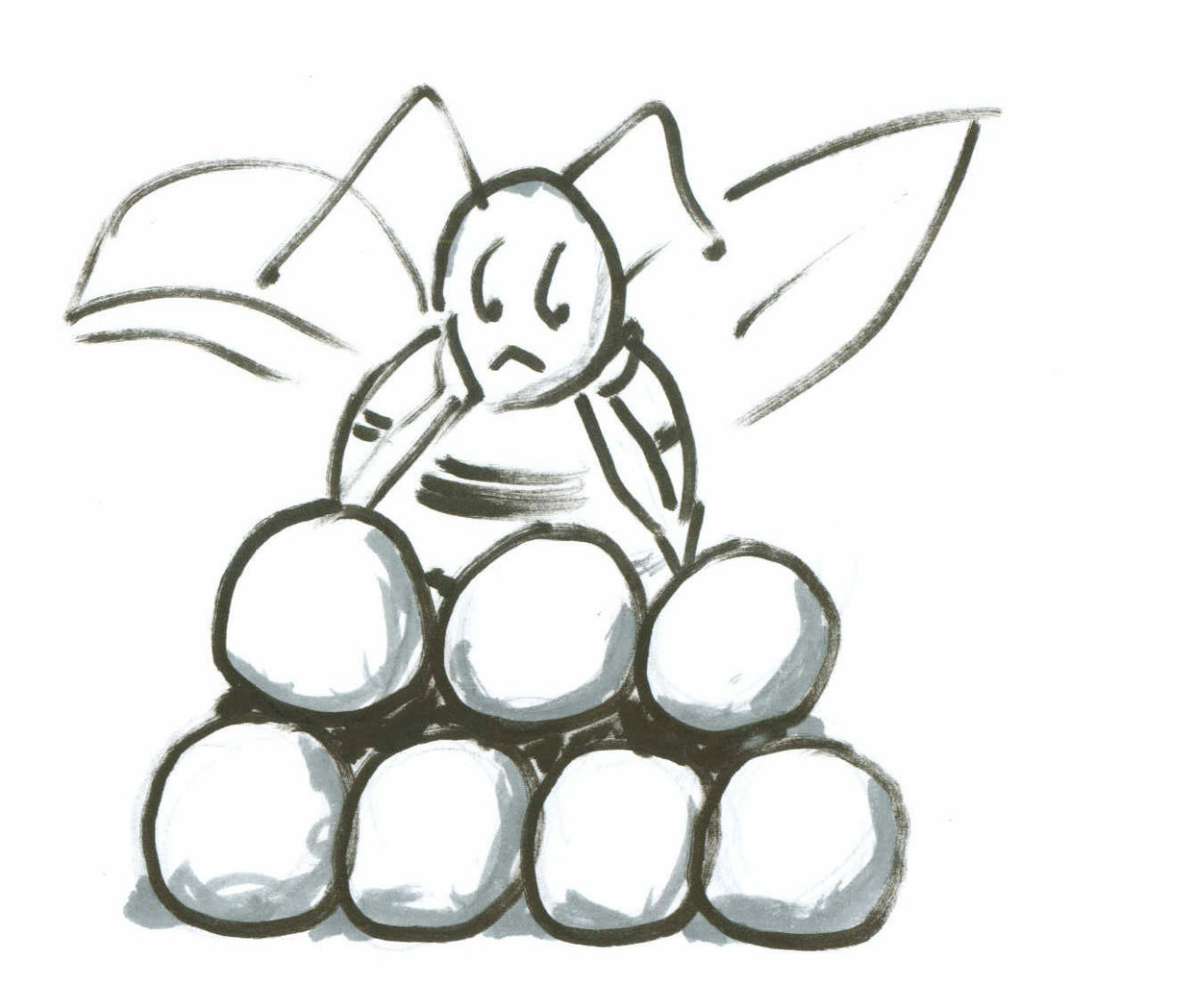
Illustration by Robert Krulwich for NPR
Bees “think in hexagon” because the hexagon is—undoubtedly—the best and only shape for the job.13 Pack a bunch of circles together and there will be gaps at the corners. Pack a bunch of triangles together, and you’ll find yourself needing twice as much wax than if you had employed a more open, capacious shape.
Thus, the mysterious six-sided force driving the bee’s repetition is, alas, logic itself. Without question, a hexagon is the most elegant conclusion to the problem at hand—design-perfection honed by millions of years of natural refinement. It is also a very certain conclusion, provoking no further curiosity. Which is fine: bees don’t need to endlessly prod at the structural mysteries of the universe. They need hives.
Designers, like me, are similarly compelled by logic, unequivocal and pure. We are building a new sensory world of interactive hardware and software with a single goal in mind: to accommodate exactly and only what the user has already decided they want to do. A banner ad needs no desultory paths. Your assumptions on the nature of matter will never be challenged by a shopping cart experience. Interactions purpose-built for a user should—and can only—be a perfect mirror on the user’s intentions. Any other construction would be ridiculous.
While our conversations with people will always be unpredictable, the rise of haptic tech will mean our built-interactions will increasingly conform to a pattern: one undergirded by our own wish-fulfillment. Our future is being built out of things that don’t push back.
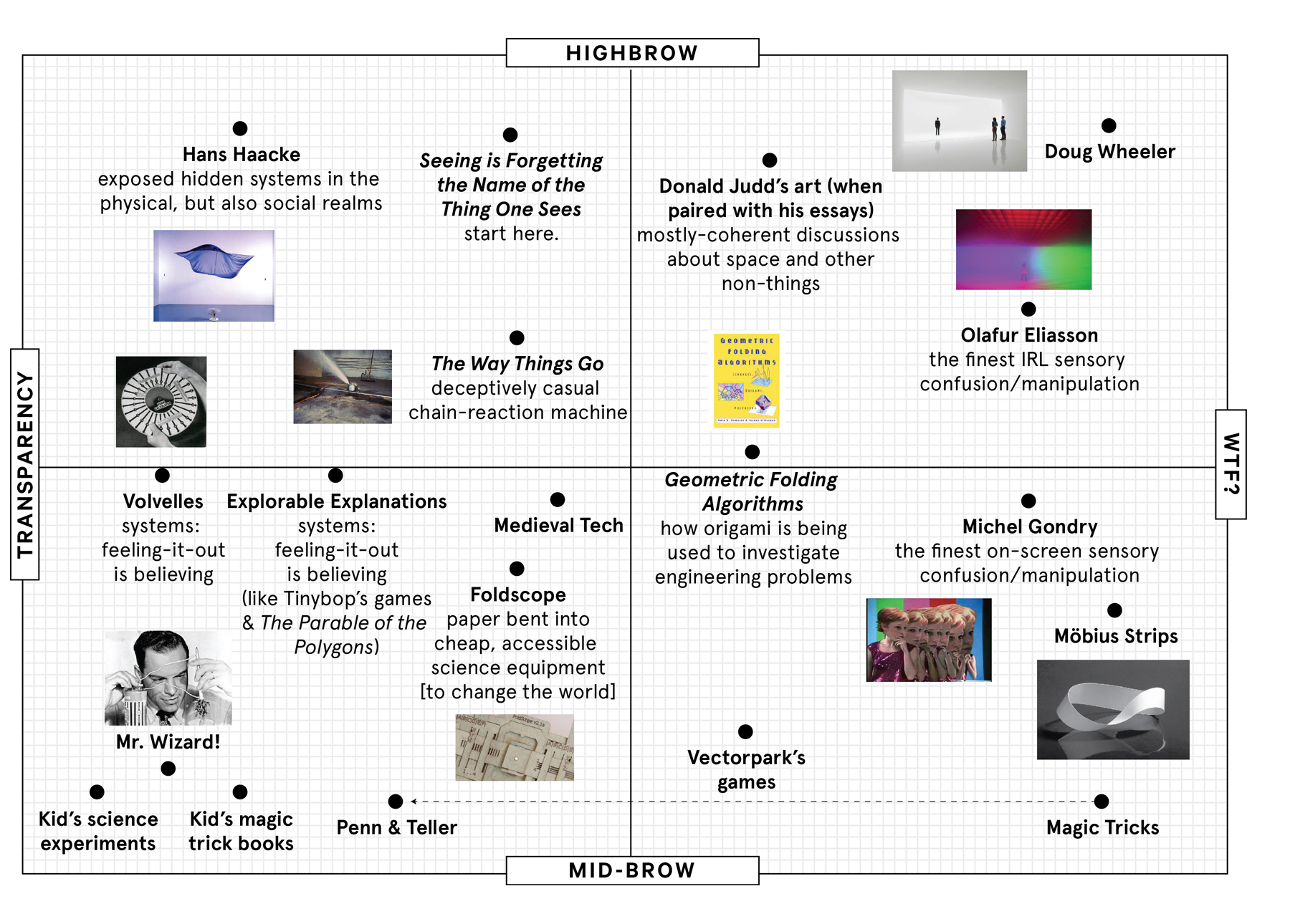
Some favorite lo-fi magic & reasoning-with-your-hands things (some physical, some digital experiences)
[1] Is the Man Who Is Tall Happy?, directed by Michel Gondry (2013).
[2] George Pitcher, The Philosophy of Wittgenstein (Prentice Hall, 1964).
[3] Lera Boroditsky, “How Does Our Language Shape the Way We Think?” Edge.org, June 11, 2009.
[4] Donald Judd, Some Aspects of Color in General and Red and Black in Particular (Sikkens Foundation, 1993).
[5] Lawrence Weschler, Seeing Is Forgetting the Name of the Thing One Sees (Expanded Edition): Over Thirty Years of Conversations with Robert Irwin (UC Press, 2009).
[6] Roberta Smith, “Ineffable Emptiness, From Dawn to Dusk: Robert Irwin’s Light–and–Space Work Returns to the Whitney,” New York Times, July 25, 2013.
[7] Weschler, 2009.
[8] Kenya Hara, Designing Design (Lars Mueller, 2011).
[9] Hara, 2011.
[10] Erik D. Demaine and Joseph O’Rourke, Geometric Folding Algorithms: Linkages, Origami, Polyhedra (Cambridge University Press, 2007).
[11] James Joyce, Ulysses (Sylvia Beach 1922).
[12] Constance Classen, The Deepest Sense: A Cultural History of Touch (University of Illinois Press 2012).
[13] Robert Krulwich, “What Is It About Bees and Hexagons?” Radiolab (blog), May 14, 2013.
PS-
Feedback and reading/experience suggestions are very welcome.
(Disclaimers: I am not a writer. Also, I’m redesigning my 6-year-old website now. Apologies for the non-ideal reading experience!)
No related posts.
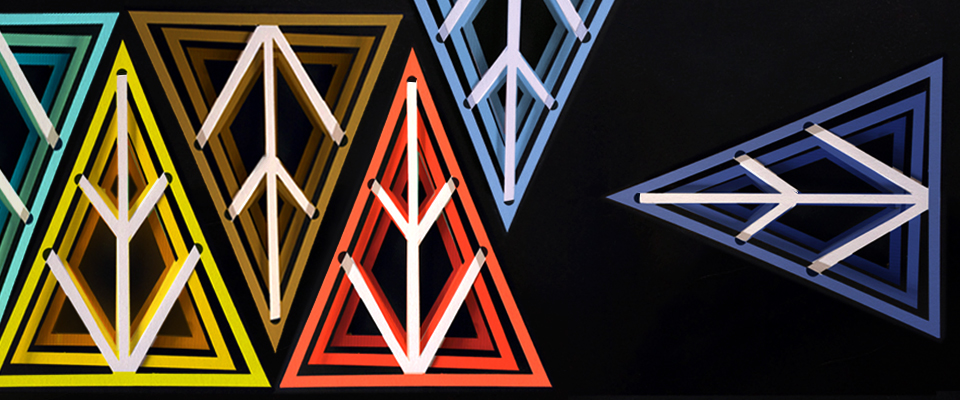
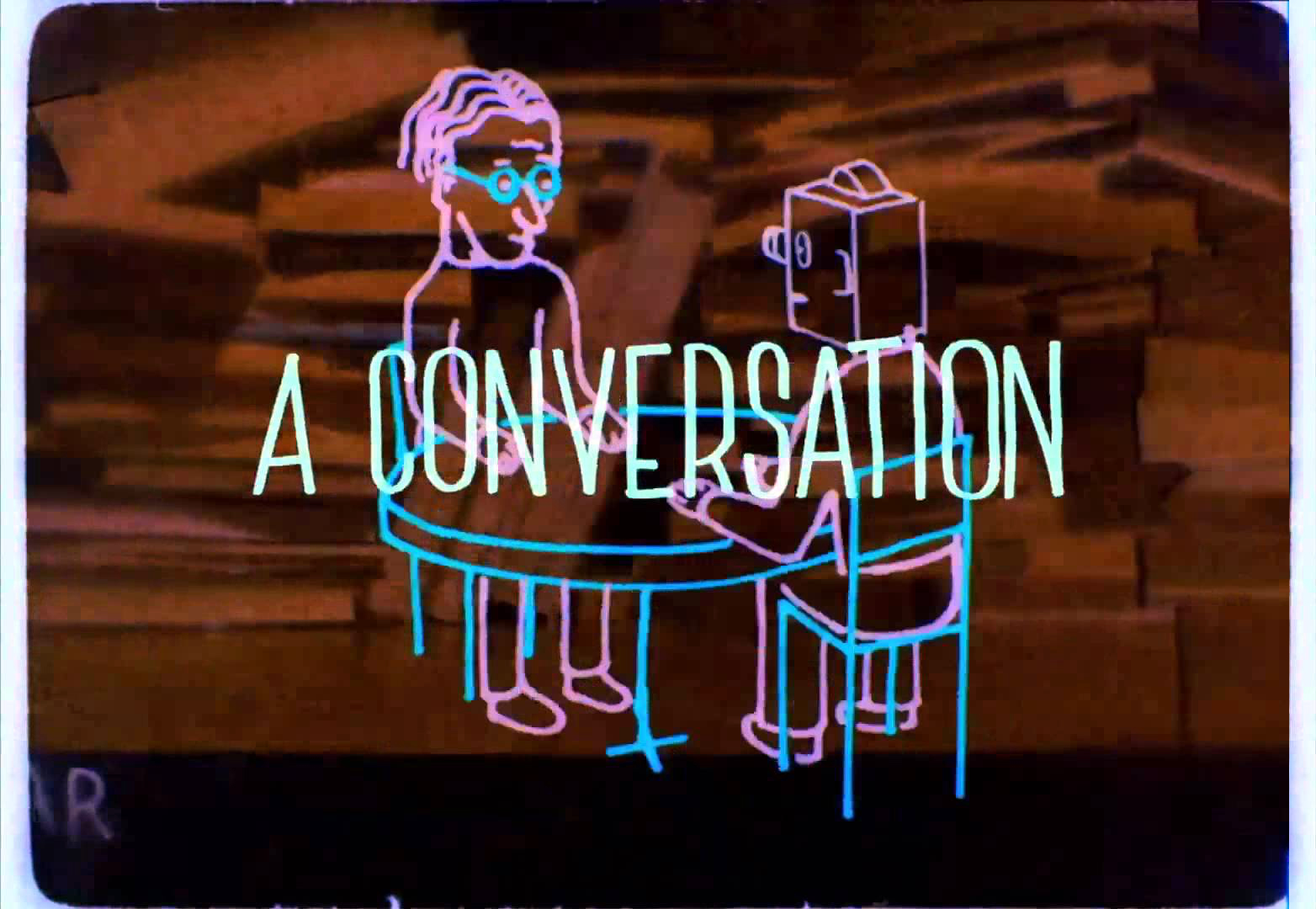

Comments
One Response to “On Reasoning and Touch”Trackbacks
Check out what others are saying...[…] Read it here. […]